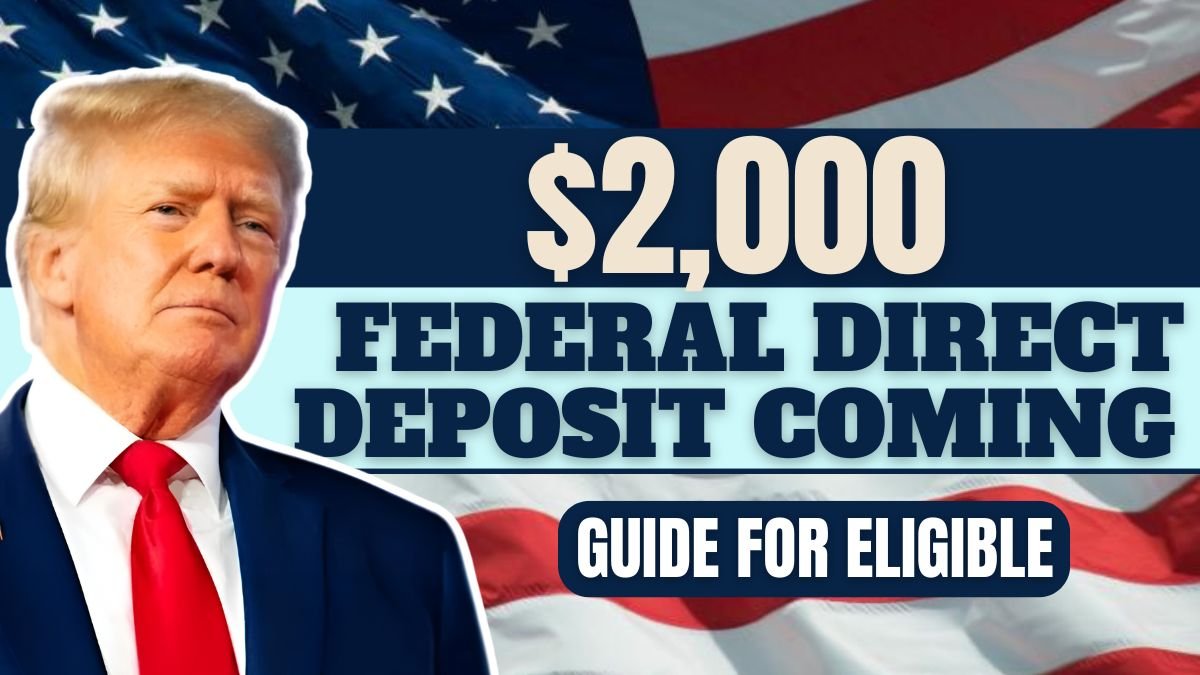A wave of good news has slowly begun hitting people’s bank accounts in the United States since mid-October. Millions of eligible taxpayers have begun receiving $2,000 direct deposits. While this may not be a traditional “stimulus check,” it’s providing a similar sense of relief for many. The U.S. Treasury and Internal Revenue Service (IRS) have confirmed this one-time federal relief payment, which aims to provide some relief from rising inflation and living costs.
What’s the reason behind this $2,000 payment?
This payment is part of the “Federal Inflation Adjustment Initiative”—an economic measure approved through early 2025. The program aims to support low- and middle-income individuals who are most affected by rising rents, healthcare costs, and the cost of everyday necessities.
According to government officials, this plan is an effort to provide relief to those most affected by the economic instability of the past few years.
No application required, the IRS is sending the money automatically
Unlike previous pandemic stimulus checks, no application is required this time. If you filed your 2024 tax return, the IRS already has all your necessary information.
Payments are being automatically determined based on your income and tax filing status and are being sent to the same bank account where you received your most recent tax refund.
According to the IRS report, direct deposits will begin November 15, 2025, and continue until November 25. For those who don’t have access to direct deposit, paper checks and debit cards will be sent the first week of November.
Who is eligible—and who isn’t
As with every relief program, eligibility depends on your income. The IRS has adopted a “gradual phase-out formula,” under which those whose income exceeds certain limits can receive partial payments.
| Filing Status | Full Payment Income Limits | Partial Payment Limits | Notes |
|---|---|---|---|
| Single | Up to $70,000 | $70,001–$90,000 | Partial payment possible |
| Married (joint) | Up to $150,000 | $150,001–$190,000 | Partial payment possible |
| Head of Household | Up to $112,500 | $112,501–$140,000 | Partial payment possible |
There are some key eligibility requirements—
You must have a valid Social Security number, be a U.S. citizen or legal resident, and your 2024 tax filing income must be within the above limits.
How to Check Payment Status
Taxpayers can check the status of their payment through two key tools—the “Get My Payment” portal and the “Where’s My Refund” tracker, both available on IRS.gov.
All you need to do is enter your Social Security number (SSN) or Individual Tax Identification Number (ITIN), filing status, and refund amount. The system updates daily so you can check the status of your payment immediately.
If you don’t receive your payment by mid-November, the IRS says you can claim it as a “Recovery Rebate Credit” on your 2025 tax filing, just as was done during the pandemic.
Why the Government Took This Step
Although inflation has eased somewhat compared to 2022, its impact remains. According to Federal Reserve data, essential goods—such as food, rent, and healthcare—are still about 17% more expensive than pre-pandemic levels.
Against this backdrop, the Federal Inflation Adjustment Initiative is being seen as a “bridge payment”—a gap-filling payment—to provide some financial support to the general public until wages improve substantially.
A Treasury spokesperson summarized it as, “This is not a permanent solution, but a practical relief.”
How Helpful Can This $2,000 Amount Be?
To be honest, $2,000 won’t completely transform anyone’s life. But it can certainly alleviate a month’s worth of stress.
For many families, it’s a rent payment, for some, it’s two weeks’ worth of groceries, and for many elderly or single parents, it’s a brief respite—a relief that has become increasingly rare in recent years.
In these times of inflation, this amount is not only useful for expenses, but also provides a sense of psychological security.
Its Impact on the Economy
Economists are divided on this relief plan. Some experts believe that injecting more cash into the market could further boost consumer demand—which could counter the Federal Reserve’s efforts to control inflation.
On the other hand, supporters argue that this program is not a major “stimulus package,” but rather a measure to provide focused relief to working households in need.
Federal Reserve analysts also say that core inflation—that is, prices excluding energy and food—is still high. Energy costs, health insurance premiums, and rental rates are well above the Fed’s 2% target, making limited relief appropriate.
Its Psychological Importance for the People
Over the past few years, the American public has experienced profound economic fluctuations, political uncertainty, and market volatility. In such an environment, when $2,000 suddenly appears in your bank account one morning, it brings not only financial relief but also mental peace.
It symbolizes that the system never fails.
Conclusion
The Federal Inflation Adjustment Initiative (FIA) cannot be seen as a long-term solution, but it certainly provides relief to families who have been struggling with inflation and instability for the past few years.
The $2,000 amount may not seem like a lot, but it could be enough to get through a month—and that’s the true significance of this relief payment.
This time, the government has adopted a simple and automated approach instead of a complex process, providing direct relief to millions of Americans without any additional effort.
This is a small but powerful message that economic recovery begins not just with numbers, but with real-life relief in people’s pockets.
FAQs
1. What is the $2,000 Federal Direct Deposit?
A. It’s a one-time relief payment from the U.S. Treasury and IRS to help offset inflation and rising living costs.
2. When will the payments be sent?
A. Direct deposits began on November 15, 2025, and will continue through November 25, 2025.
3. Do I need to apply for this payment?
A. No, there’s no application required. If you filed your 2024 tax return, the IRS will process it automatically.
